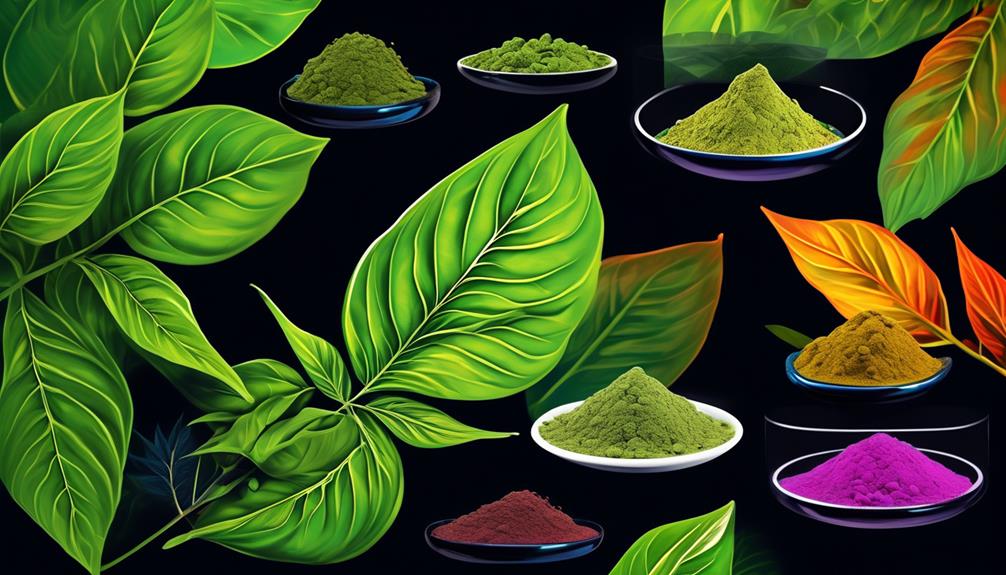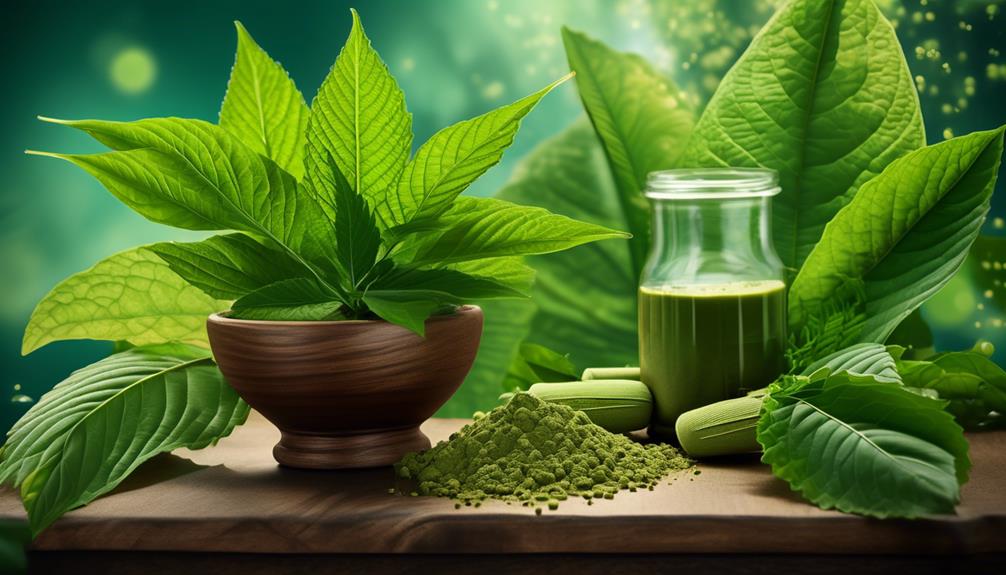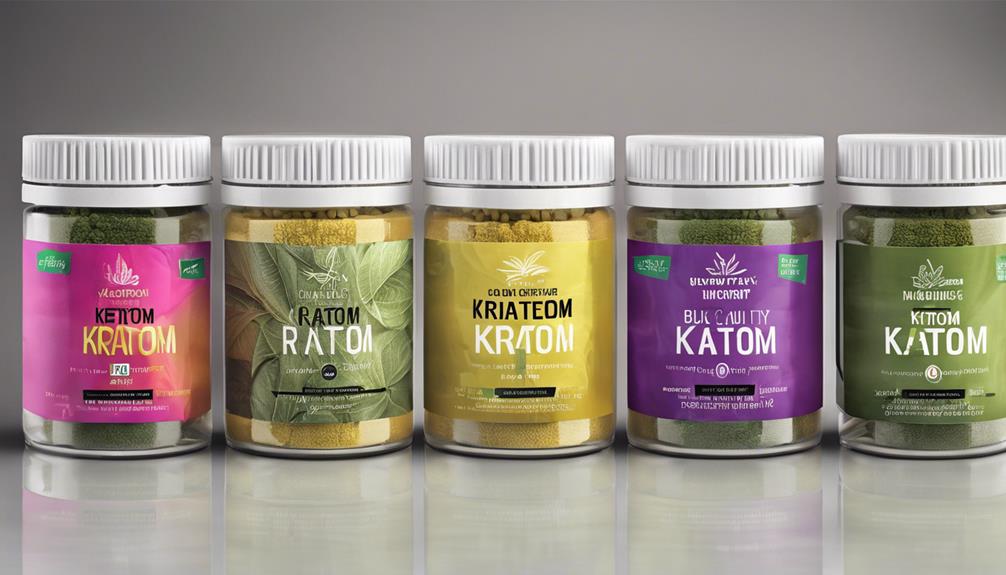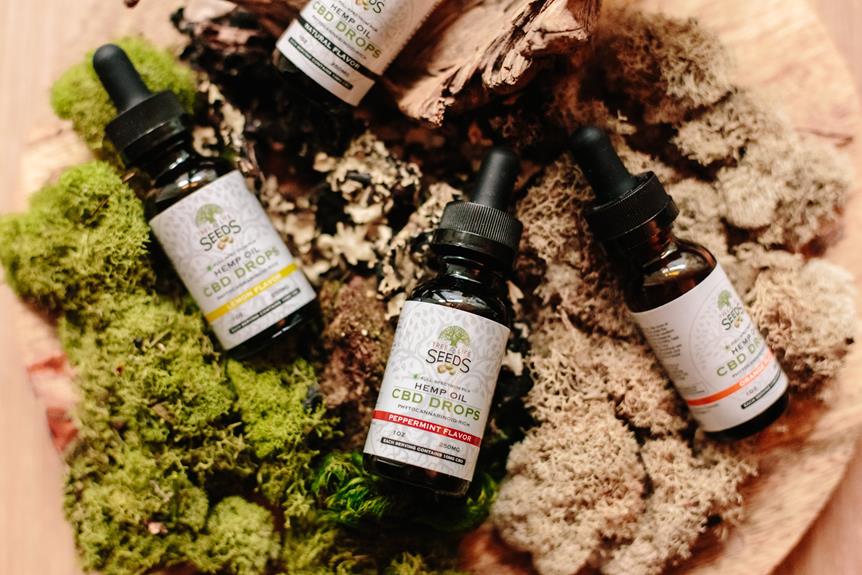Did you know that Agmatine and Kratom are two substances that may have synergistic effects when used together? While you may be familiar with Kratom and its potential benefits, Agmatine is a lesser-known compound that is believed to enhance the effects of Kratom. People who combine these two substances claim to experience improved physical performance, increased energy levels, enhanced mood, and even a decreased need for sleep. However, the safety and efficacy of this combination have not been scientifically confirmed, and individual responses may vary. So, if you're curious about the potential benefits of Agmatine and Kratom, it's important to consult with a healthcare professional and approach it with caution. But what exactly is Agmatine and how does it interact with Kratom? Let's explore further to find out.
Potential Synergistic Effects

The potential synergistic effects between agmatine and kratom have been studied and documented in scientific literature. Agmatine, a naturally occurring compound in the body, has been found to interact with various receptors and enzymes, leading to a wide range of effects. Kratom, a plant native to Southeast Asia, contains alkaloids that interact with opioid receptors, producing analgesic and mood-enhancing effects.
Research suggests that the combination of agmatine and kratom may have additive or synergistic effects. Agmatine has been shown to enhance the analgesic properties of opioids, such as morphine, by potentiating their effects. Similarly, it has been proposed that agmatine may enhance the analgesic effects of kratom by increasing its potency. Studies have also indicated that agmatine may help to prevent the development of tolerance to opioids, which could be beneficial for long-term kratom users.
Furthermore, agmatine has been shown to have anxiolytic and antidepressant effects, which may complement the mood-enhancing properties of kratom. It is hypothesized that the combination of agmatine and kratom may have a synergistic effect on mood regulation, potentially providing relief for individuals suffering from anxiety or depression.
While the potential synergistic effects between agmatine and kratom are promising, it is important to note that more research is needed to fully understand the mechanisms and potential risks involved. Additionally, individual responses to the combination may vary, and caution should be exercised when combining these substances. Consulting with a healthcare professional is recommended to ensure safe and informed use.
Agmatine's Neuroprotective Properties
After exploring the potential synergistic effects between agmatine and kratom, it is important to now delve into the neuroprotective properties of agmatine. Agmatine has been found to exhibit significant neuroprotective effects, which can play a crucial role in safeguarding and maintaining the health and function of the nervous system.
Research studies have demonstrated that agmatine can prevent the development of tolerance to morphine in a dose-dependent manner. This indicates that agmatine has the potential to mitigate tolerance to opioids and potentially reduce the risk of opioid dependence. Moreover, when combined with morphine, agmatine has been observed to prevent the induction of tolerance. This suggests a potential therapeutic application of agmatine in managing opioid tolerance and dependence.
Furthermore, agmatine has been found to dose-dependently prevent withdrawal symptoms induced by naloxone in morphine-dependent mice. This highlights the potential of agmatine in reducing the adverse effects associated with opioid withdrawal.
These neuroprotective effects of agmatine are attributed to its activation of imidazoline receptors. By activating these receptors, agmatine can protect against the detrimental effects of opioid tolerance, dependence, and withdrawal on the nervous system.
Kratom's Analgesic Effects

Kratom's analgesic effects, attributed to its interaction with opioid receptors, provide relief from pain in the brain and spinal cord. This natural botanical substance contains alkaloids, including mitragynine and 7-hydroxymitragynine, which play a crucial role in its analgesic properties. By acting on the body's natural pain pathways, these alkaloids can effectively alleviate pain.
The analgesic effects of kratom can vary depending on the strain and dosage used. Some strains, such as Red Bali and Maeng Da, are particularly renowned for their potent pain-relieving properties. These strains may offer enhanced relief for individuals seeking a natural alternative to manage their pain.
Interestingly, the analgesic effects of kratom can be further enhanced when combined with other substances, such as agmatine. Agmatine is known to interact with various receptors in the body, including opioid receptors. When used in combination with kratom, agmatine may potentially improve pain relief and even mitigate tolerance issues.
Research suggests that kratom's analgesic effects may be particularly beneficial for individuals dealing with chronic pain conditions. However, it is important to note that individual responses to kratom can vary, and further research is needed to fully understand its potential benefits and risks.
Enhancing Therapeutic Benefits
To enhance the therapeutic benefits of kratom, you may consider combining it with agmatine, a compound known to interact with opioid receptors and potentially improve pain relief. Agmatine has shown promise in preventing the development of tolerance to morphine, as well as preventing withdrawal symptoms and weight loss in morphine-dependent mice. This suggests that agmatine may have a similar effect when combined with kratom, allowing for prolonged pain relief without the need for increasing kratom dosage.
Agmatine sulfate, a metabolite of the amino acid L-arginine, is commonly found in workout supplements and is known for its ability to enhance blood flow to muscles, the brain, and other tissues. It also boosts the body's production of Nitric Oxide, which has been linked to pain relief. By combining agmatine with kratom, you may potentially enhance the effects of kratom, leading to more effective pain relief.
When using agmatine with kratom, it is recommended to start with a lower dose of agmatine sulfate and adjust the serving size of kratom accordingly. This gradual approach allows you to find the optimal dosage that enhances the therapeutic benefits of kratom without causing any adverse effects. It is important to note that the effects of agmatine sulfate as a potentiator may vary from person to person, so it is crucial to consult with a physician before combining these substances.
Is Agmatine Safe to Take With Lucky Herbals Kratom?
Yes, it is safe to take agmatine with Lucky Herbals Kratom, as indicated in a lucky herbals kratom article. Agmatine can enhance the effects of Kratom and may help reduce tolerance. However, it is important to consult with a healthcare professional before combining any supplements or medications.
How Does Magnesium Interact with Kratom Compared to Agmatine?
When it comes to the interaction with kratom, magnesium benefits in kratom by helping to enhance its effects and promote relaxation. On the other hand, agmatine also interacts with kratom by potentially extending its duration and minimizing tolerance build-up. Both magnesium and agmatine play unique roles in how they interact with kratom.
Combining Agmatine and Kratom

To optimize the therapeutic benefits of kratom, you may consider incorporating agmatine, a compound known for its potential to interact with opioid receptors and enhance pain relief. Combining agmatine with kratom has shown promising results in enhancing physical performance, energy levels, mood, stamina, and endurance while potentially reducing the need for sleep.
When combining agmatine and kratom, it is recommended to start with ⅔ of the pink scoop and take half the serving size of your regular kratom intake. This cautious approach allows you to assess the effects and adjust the dosage accordingly. It is important to note that the effects may vary among individuals, so it is advisable to start with lower doses and gradually increase if necessary.
Agmatine sulfate can be a great potentiator for some consumers when combined with fast strains like White Vein Malay or Green Maeng Da. This combination has been reported to enhance the analgesic and euphoric effects of kratom, providing a more profound pain relief and mood upliftment.
One of the benefits of agmatine is its potential to prevent the development of tolerance to opioids. In a study conducted on morphine-dependent mice, agmatine prevented withdrawal symptoms and loss in body weight induced by naloxone. This suggests that combining agmatine with kratom may help mitigate the development of tolerance, allowing you to maintain the therapeutic effects of kratom for a longer duration.
Frequently Asked Questions
What Can I Stack With Agmatine?
You have a variety of options when it comes to stacking agmatine with other supplements. By combining agmatine with certain substances, you can maximize its effects and potential benefits. Some popular choices for stacking with agmatine include creatine, citrulline, and beta-alanine. These supplements can enhance muscle performance, increase endurance, and improve overall physical performance. However, it's important to consult with a healthcare professional to determine the appropriate dosage and ensure safety when combining agmatine with other supplements.
Does Agmatine Lower Opiate Tolerance?
Yes, agmatine can lower opiate tolerance. Studies have shown that agmatine prevents the development of tolerance to morphine in mouse models. It also prevents the induction of tolerance when used in combination with morphine. Agmatine has been found to dose-dependently prevent withdrawal symptoms in morphine-dependent mice. These effects are mediated through the activation of imidazoline receptors. However, it is important to note that more research is needed to fully understand the effects of agmatine on opiate tolerance in humans.
What Does Agmatine Do to the Brain?
Agmatine has potential neuroprotective effects and can impact neurotransmitter release and modulation of synaptic plasticity in the brain. It may help protect the brain from damage and support healthy brain function. It has been shown to regulate the release of various neurotransmitters, such as glutamate and dopamine, which play important roles in communication between brain cells. Additionally, agmatine has been found to modulate synaptic plasticity, which is essential for learning and memory processes.
Does Agmatine Increase Nitric Oxide?
Agmatine has been shown to increase nitric oxide levels in the body. This increase in nitric oxide can improve blood flow and circulation, which is beneficial for overall health. Additionally, the boost in nitric oxide may also enhance exercise performance by increasing oxygen and nutrient delivery to the muscles. So, if you're looking to improve blood flow and potentially enhance your exercise performance, agmatine supplementation could be worth considering.










